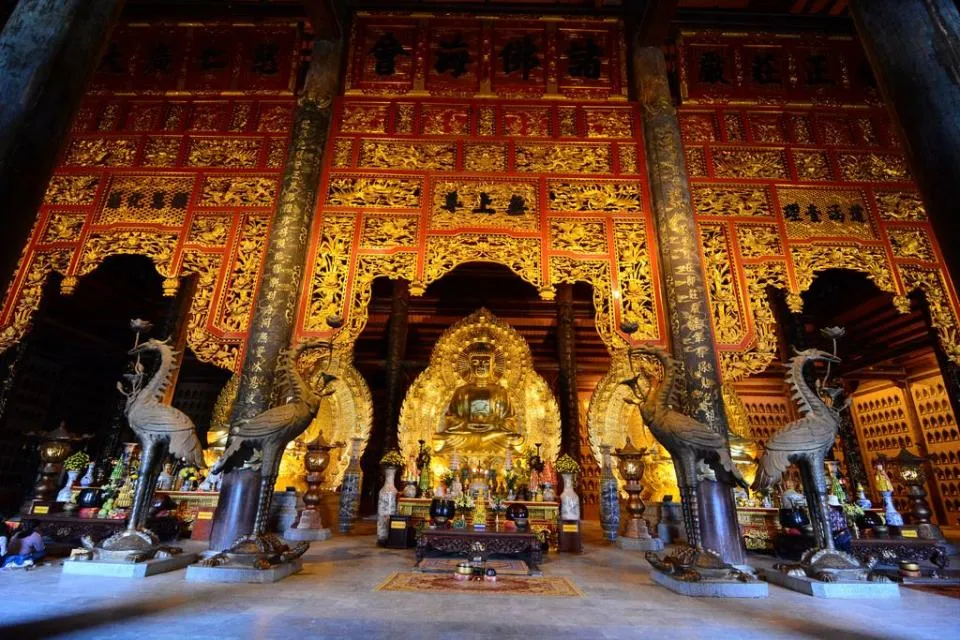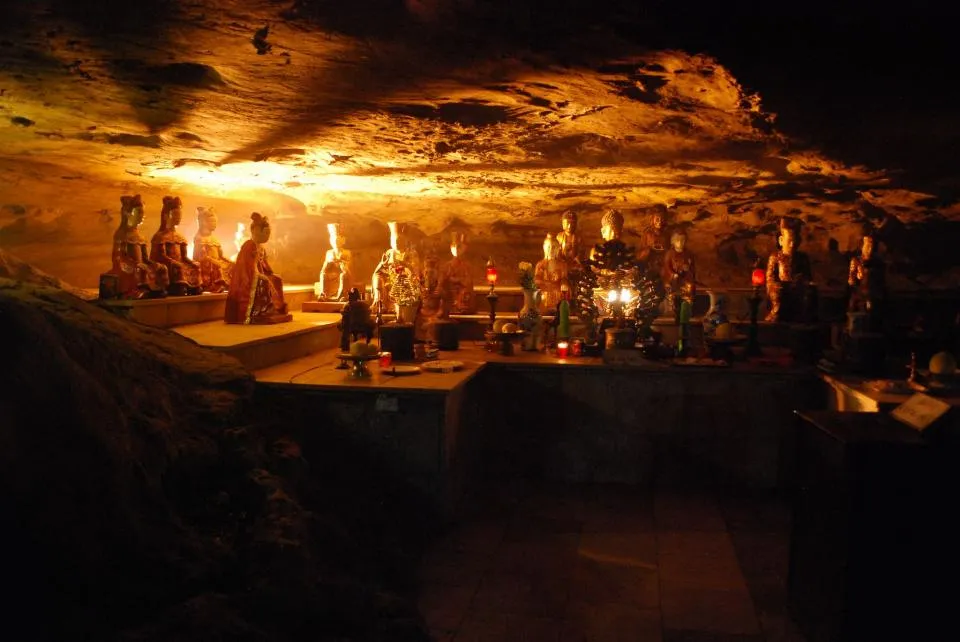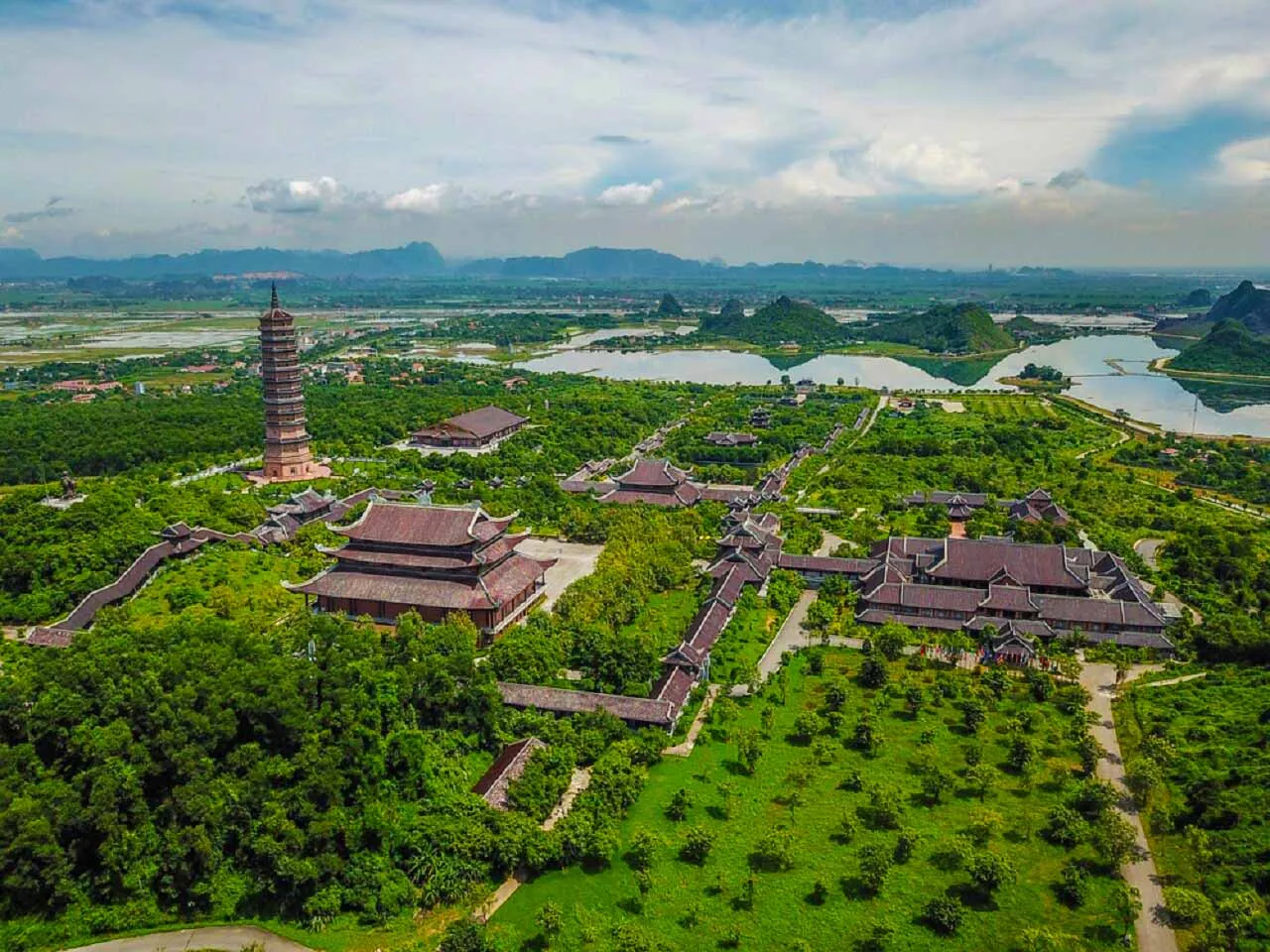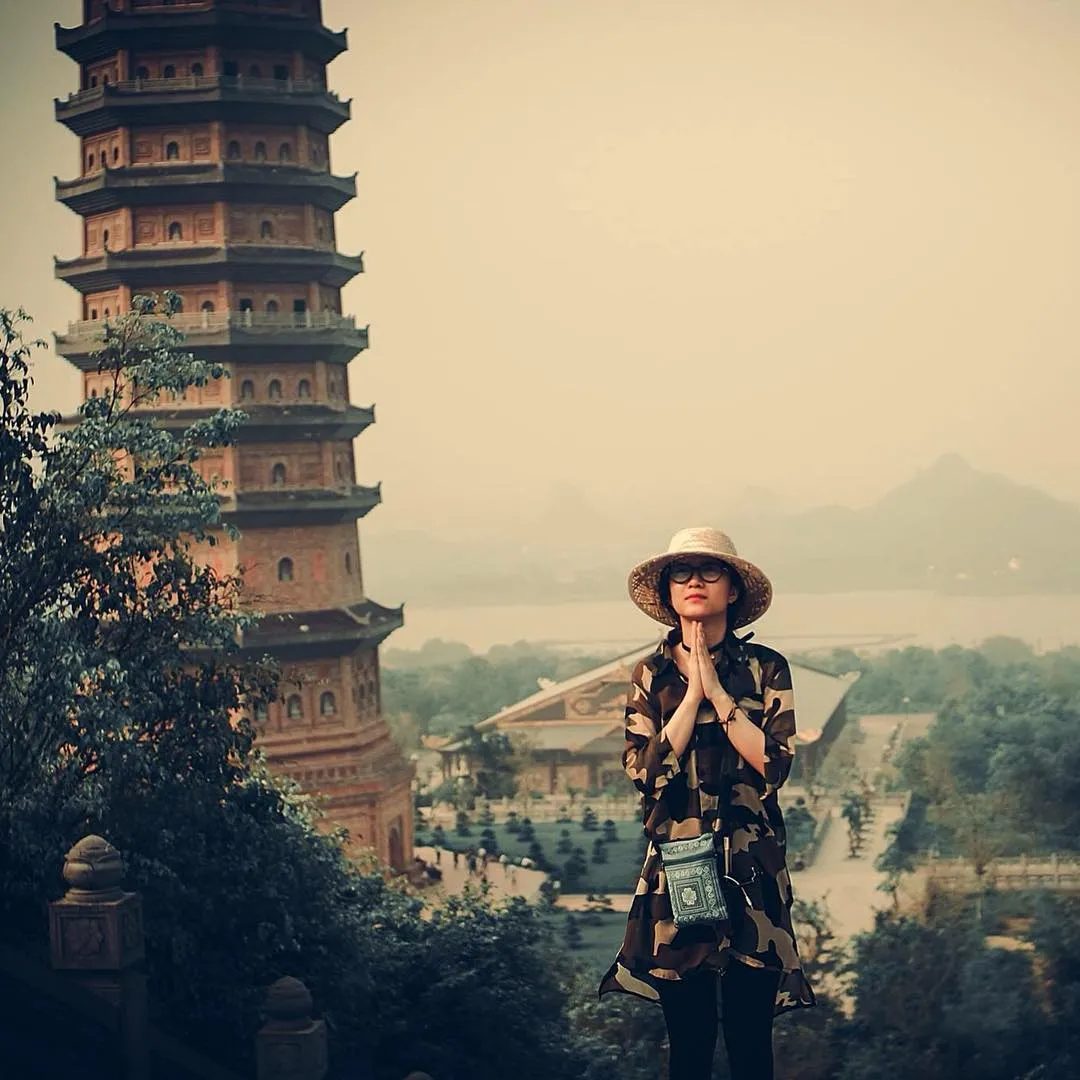Bai Dinh, a sacred land in Ninh Binh province, has long been a familiar pilgrimage destination for Buddhists and visitors from all directions. This place is not only famous for its majestic natural scenery but also for its massive Buddhist architectural complex, imbued with cultural and historical values. Let’s explore useful experiences for a complete and meaningful pilgrimage to Bai Dinh Pagoda.
Bai Dinh Pagoda, with its dignified and sacred beauty, is always an attractive destination for domestic and international tourists. This place is not only a spiritual sanctuary to find peace but also an opportunity to admire unique Buddhist architectural works and impressive Asian records. Join “Du lịch khắp thế gian” (Travel Around The World) to discover interesting things and prepare for your Bai Dinh pilgrimage.
Why is Bai Dinh Pagoda a Famous Pilgrimage Site?
Bai Dinh Pagoda is not just a simple temple, but also a massive spiritual architectural complex, associated with the history and culture of Ninh Binh. The name “Bai Dinh” means heading towards Dinh mountain, which marks the heroic historical events of the nation.
- History of Formation: Dinh Mountain was once where King Dinh Tien Hoang set up an altar to pray to Heaven for favorable weather. King Quang Trung also chose this place to perform a flag-raising ceremony before marching to Thang Long to defeat the Qing army. Ancient Bai Dinh Pagoda was formed when Saint Nguyen Minh Khong discovered caves and turned them into places of practice and healing for King Ly Than Tong.
- Architectural Scale: The current Bai Dinh Pagoda complex covers an area of 539 hectares, including the ancient pagoda area, the new pagoda, cultural park, Buddhist academy, reception area, landscape park, Dam Thi Lake, releasing lake, and transportation and parking systems.

- Buddhist Events: Bai Dinh Pagoda once hosted the Great Ceremony to welcome Buddhist relics from India to Vietnam in 2010 and the United Nations Vesak Day 2019, gathering thousands of delegates from all over the world.
- Impressive Records: Bai Dinh Pagoda holds many Asian and Southeast Asian records, such as the largest gold-plated bronze Buddha statue in the Dharma Master Palace, the largest bronze Maitreya Buddha statue in Southeast Asia, the largest bronze bell in Vietnam, and the longest Arhat corridor in Asia with 500 statues.
These factors have contributed to creating the special attraction of Bai Dinh Pagoda, making it an unmissable pilgrimage destination for tourists and Buddhists.
Detailed Bai Dinh Pagoda Pilgrimage Experience from A to Z
To have a smooth and meaningful pilgrimage to Bai Dinh Pagoda, you need to note some of the following experiences:
Preparation Before Going
- Ideal Time: Spring (January to March of the lunar calendar) is the time for the Bai Dinh Pagoda festival, attracting crowds of tourists. However, if you want to avoid crowds, you can come at other times of the year.
- Dress Code: Choose modest, polite clothing suitable for spiritual spaces. Avoid wearing revealing or offensive clothes.
- Footwear: You should choose sports shoes or flats for easy movement in the large pagoda grounds.
- Luggage: Bring light luggage, sunscreen, hats, and drinking water.
- Small Change: Prepare small change for offerings and merits at the shrines.

Getting to Bai Dinh Pagoda
- From Hanoi: You can travel by bus, train, or private car. Travel time is about 2-3 hours.
- In Ninh Binh: You can rent a motorbike, taxi, or take a motorbike taxi to Bai Dinh Pagoda.
Must-See Attractions
The Bai Dinh Pagoda complex is very large, so you should choose important destinations to visit in one day:
- Ancient Bai Dinh Pagoda: Located on the mountain, about 800m from the new Bai Dinh Pagoda. The pagoda has a strong Ly Dynasty architecture, simple and ancient.
- New Bai Dinh Pagoda: A massive pagoda area with many magnificent architectural works such as the Three-Entrance Gate, Arhat Corridor, Bell Tower, Avalokiteśvara Bodhisattva Palace, Dharma Master Palace, Three Worlds Palace, Maitreya Buddha, and Bảo Tháp (Stupa).
- Sang Cave – Toi Cave (Bright Cave – Dark Cave): Two natural caves located near ancient Bai Dinh Pagoda. Sang Cave is a place of worship for Buddha, while Toi Cave is a place of worship for Lady Thuong Ngan and fairies.
- Cao Son God Temple: Located in Sang Cave, it is a place of worship for the god who helped people reclaim land and taught them how to make a living.
- Ngoc Well (Jade Well): A natural well with jade-green water, 30m in diameter, 10m deep, never running out of water.

Notes When Visiting
- Maintain Hygiene: Do not litter or throw garbage indiscriminately in the pagoda grounds.
- Respect: Keep quiet, do not talk loudly, and do not make noise that affects the tranquility of the pagoda.
- Incense Offering: Offer incense in the designated places, do not offer incense indiscriminately.
- Shopping: Be careful when buying souvenirs, avoid being overcharged.

Combine Pilgrimage and Explore Ninh Binh
Pilgrimage to Bai Dinh Pagoda is part of the journey to discover the beauty of Ninh Binh. You can combine visiting other famous places such as:
- Trang An: Ecotourism area with beautiful mountains and rivers. This place also has many sacred temples and pagodas.
- Tam Coc – Bich Dong: Known as “the second most beautiful cave in Vietnam,” Tam Coc – Bich Dong possesses poetic beauty with magnificent caves.
- Thung Nang (Sun Valley): A peaceful destination with pristine natural scenery, suitable for those who want to find tranquility.

Conclusion
Pilgrimage to Bai Dinh Pagoda is not only a spiritual journey but also an opportunity to explore the cultural, historical, and natural beauty of Ninh Binh. With the experiences shared above, hopefully, you will have a complete, meaningful, and memorable journey. Are you ready for your Bai Dinh pilgrimage? Share your experiences with “Du lịch khắp thế gian” (Travel Around The World)!